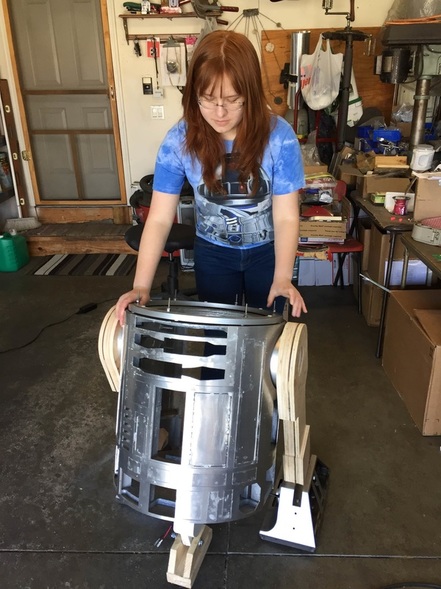Raytheon is working on several fascinating projects, and I enjoyed learning more about them. I also met so many brilliant people during my time there. Scott Plant, senior engineering manager, was the organizer. He and I serve together on the Sci-Fi Central planning committee, so I already knew from working with him at Science Central that he is quite imaginative and he is passionate about his work. He informed me about the company itself and what they do. He also gave me a tour of the building and showed me the incredible "Innovation Lab": a lab specifically for the employees to use to create their own projects which they can then market to the company.
Ms. Kathie Irk, systems engineer, discussed some of the declassified advanced technology that Raytheon makes to help plan missions and provide alternatives to operators. She also showed me one of the radio labs and explained how the radios are used by our military.
Next, Mr. Michael Conrad and I shared our electronic design experiences. We discussed circuit board design and fabrication, and he took me on a tour of another lab, this one with processors and testing equipment. Mr. Conrad showed me one of the circuits that Raytheon is reverse engineering to help make the products safer, as well.
Mr. Julian Ross, hardware engineer, spoke with me about firmware: how it works, what it does, and how he became a firmware engineer. He also walked me through the process of making one of Raytheon's incredible projects come to fruition.
Another hardware engineer, Mr. Eric Harmison, showed me how radios transmit signals and what it looks like when they are transmitting. He showed me how they look by using an analyzer and a signal generator, which precisely displayed the variations in signals.
Mr. Greg Carnes, systems engineer, evaluated the various specialties that an electrical engineer can have and what each entails. He then went on to discuss the benefits of each specialty and gave me examples of how each is used.
Last, I spoke with two software engineers: Mr. Nathan Schroer and Ms. Brenda Richardson. They took me on a tour of a classified lab and showed me an excellent example of how quickly technologies can change. The testing and experimentation equipment in the lab used to take up an entire wall or more, but with the technological advances, the equipment takes up just a few racks. They also informed me of possible opportunities at Raytheon for future consideration.
I had a fantastic time, I learned a lot, and I am hopeful that I can someday secure an internship with Raytheon so that I can delve deeper into their amazing technologies and products!

 RSS Feed
RSS Feed